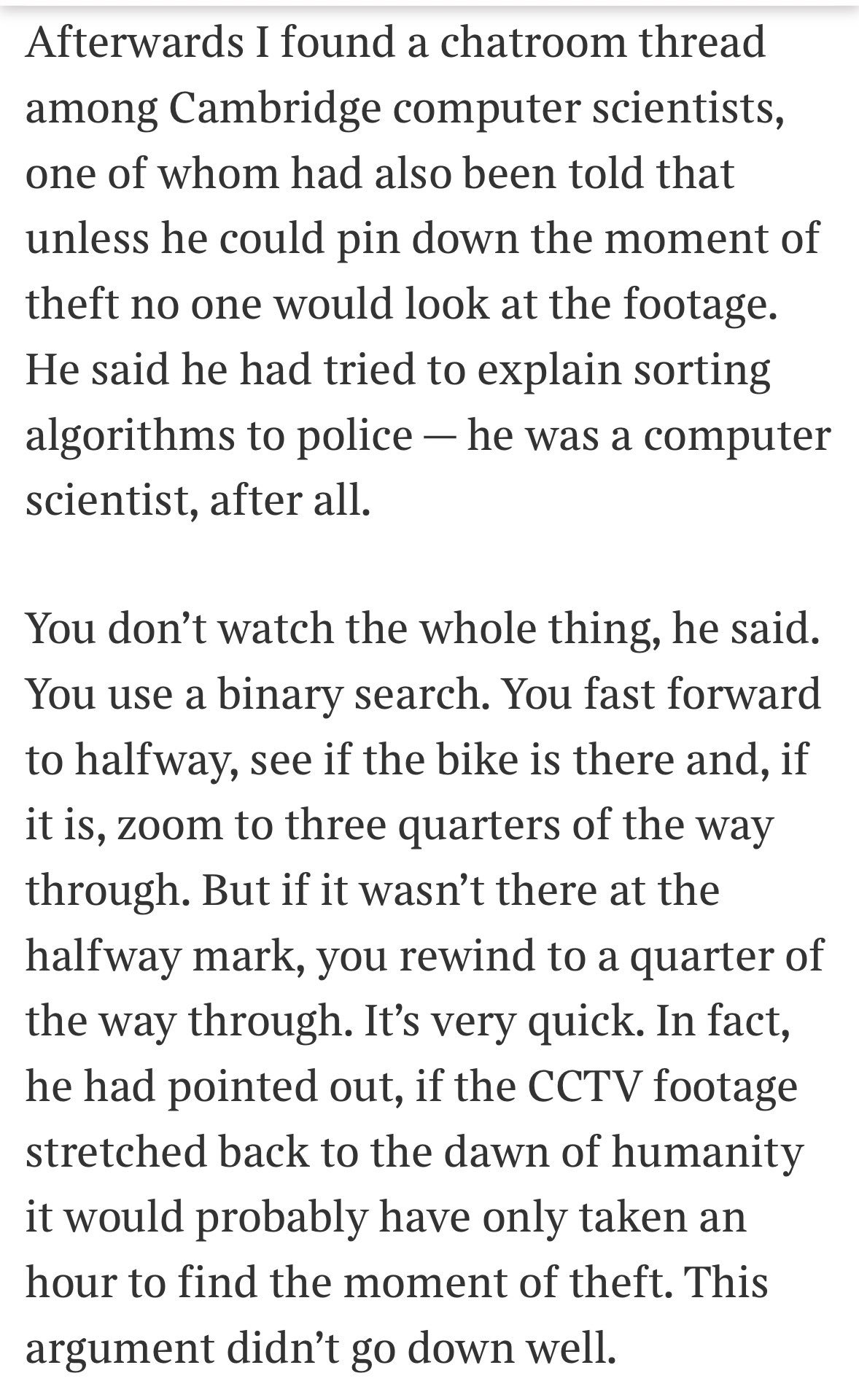I thought this had to be hyperbole, so I did the math myself. I'm assuming human history is 200,000 years as google says, and we want to narrow this down to the second the bike disappeared. also that the bike instantly vanished so there's no partially existing bike.
each operation divides the time left in half, so to get from 200k years (6.311×10^12 seconds) to 1 would take ~42.58 divisions, call it 43. even if we take a minute on average to seek and decide whether the bike is there or not it would still be less than an hour of manual sorting
hell, at 60fps it would only take another 6 divisions to narrow it down to a single frame, still under an hour
edit: to use the entire hour we'd need a couple more universes worth of video time to sort through, 36.5 billion years worth to be exact. or a measly 609 million years if we need to find that single frame at 60fps
